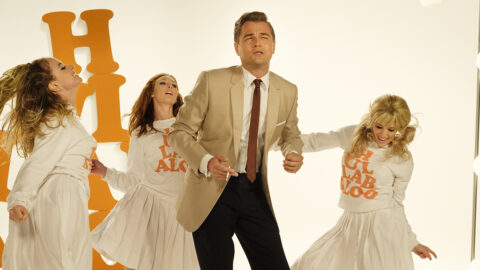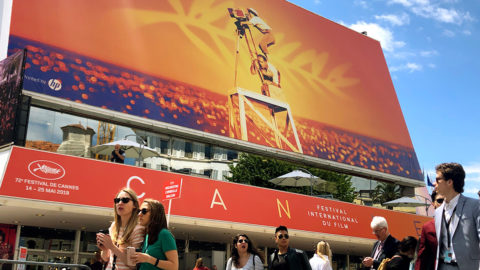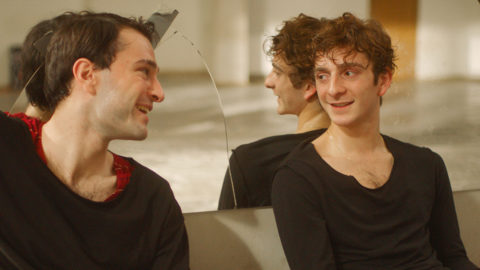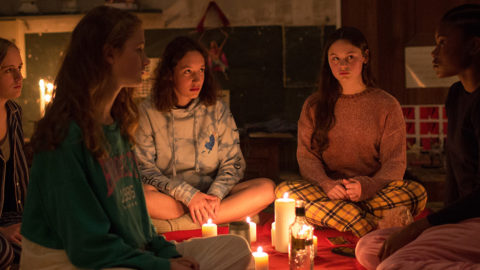Cannes Dispatch: Once Upon a Time… in Hollywood
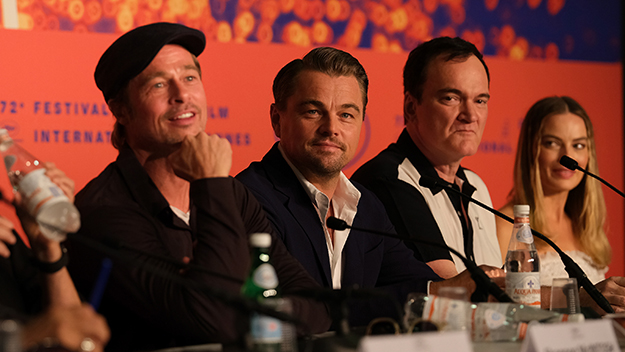
Brad Pitt, Leonardo DiCaprio, Quentin Tarantino, and Margot Robbie at a press conference for Once Upon A Time… in Hollywood during the 72nd annual Cannes Film Festival on May 22, 2019
When Quentin Tarantino finished the script for his ninth film, Once Upon a Time… in Hollywood, he decided not to let it out of his sight. Cast and crew had to travel to his house to read the only printed copy. Upon reading it, Tarantino’s longtime assistant director William Clark, who first worked with him on Pulp Fiction, said, “Number nine is like all eight of them put together.”
At a press conference here in Cannes, Tarantino was asked whether his new film is meant to summarize his work. “I hadn’t really thought about it like that,” said the director, seated alongside cast members Brad Pitt, Leonardo DiCaprio, and Margot Robbie. “There is a bit of a summing up. I wasn’t necessarily trying to do that, but it just kept occurring.”
Some have dubbed this new movie “Tarantino’s Roma.” He was only 6 in 1969, the year in which his new movie is set, and was living in Southern California at the time, the dawn of the moment he would start watching grown-up movies with his stepfather. A love letter to Los Angeles, Once Upon a Time… in Hollywood offers a vivid, obsessive portrait of Southern California in that era: neon signs, iconic music, cars, radio jingles, clothing, food labels, and TV shows are meticulously depicted or re-created to immerse the viewer in period detail. Looking back after 50 years, we know just how much Hollywood, the overall culture, and the country were changing.
Leonardo DiCaprio stars as Rick Dalton and Brad Pitt is Cliff Booth, respectively a declining big-screen actor and his amiable stunt double, assistant, and friend navigating a changing city and film industry. “I immediately identified with this character in many ways, because I grew up in the industry,” DiCaprio said. “This guy is on the outskirts; time is changing and he’s left behind.”
While Booth lives in a trailer aside a drive-in movie theater in the Valley, Dalton resides next door to the fancy home of Roman Polanski, then Hollywood’s “It” director in the wake of Rosemary’s Baby, and his pregnant wife, actress Sharon Tate (played by Margot Robbie). “It’s almost unfathomable to think about how much Rosemary’s Baby made in its day. It was common for a film to make $8 million. It made like $35 million,” Tarantino said. Tarantino acknowledged that he didn’t pursue Polanski as a source for the project, instead mining his own vast knowledge of film and TV to round out the lives and experiences of the movie’s main characters.
“There are few people in this world that have the collective knowledge, not only of cinematic history, but of music and television. It’s almost like tapping into a computer database,” DiCaprio said of Tarantino. “The wealth of knowledge keeps coming and coming.”
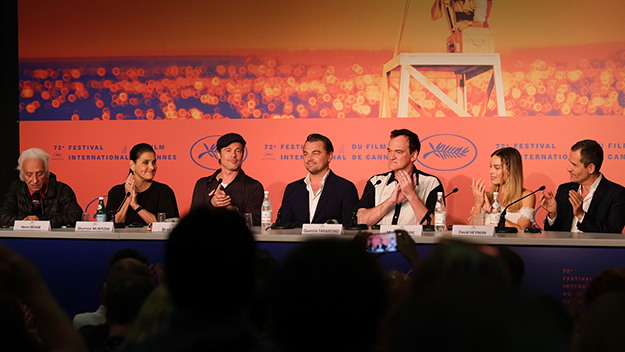
Shannon McIntosh, Brad Pitt, Leonardo DiCaprio, Quentin Tarantino, Margot Robbie, and David Heyman
Whenever Tarantino has a new film at Cannes, his presence seems to stir the festival like no other director working today. Twenty-five years ago, he won the Palme d’Or for Pulp Fiction, and when he was here with Inglorious Basterds 10 years ago, near fights broke out as attendees jockeyed to gain access to screenings. On the morning of the premiere of Once Upon a Time… in Hollywood, kids in tuxes were waving handmade signs pleading with passersby for tickets to the screening. By showtime, the theater filled up quickly, shutting out hundreds of attendees, leaving them angrily screaming.
As its title suggests, Once Upon a Time… in Hollywood is something of a fairy tale. Yet like so many movies about movies, such as Billy Wilder’s Sunset Boulevard and David Lynch’s Mulholland Dr., Tarantino’s latest depicts a darker side of Hollywood and those who dream of success. Tarantino and the studio don’t want the film’s initial viewers to reveal too much of that dark side. On the eve of the festival, and again via a statement read to critics and journalists at the first screening, Tarantino requested that viewers not reveal plot details for those who have yet to see the film, which is being released in July. While the first half of Once Upon a Time… in Hollywood captures the Los Angeles of Tarantino’s youth, the second half (and certainly a violent final act) explores how the paths of Dalton, Booth, and Tate—each from a distinct level of Hollywood life—intersect.
Tarantino was asked at the press conference why Tate has a much smaller role than either Dalton or Booth, and why she has few lines of dialogue when she is on screen. After Tarantino declined the question (“I just reject your hypotheses”), Robbie interjected, “I think the moments that I got on screen gave an opportunity to honor Sharon and her lightness. I don’t think it was intended to delve deeper. I think the tragedy was ultimately the loss of innocence, and I felt like that could be adequately done without speaking . . . Rarely do I get an opportunity to spend so much time on my own as a character.”
Talking about the Manson cult murders that took the life of Tate in the summer of 1969, Tarantino offered, “The more you learn about it, the more information you get, it doesn’t make it any clearer. It makes it more obscure. How he was able to get these girls and these young boys to submit to him, it just seems unfathomable.”
Eugene Hernandez is Deputy Director of Film at Lincoln Center and Co-Publisher of Film Comment.



